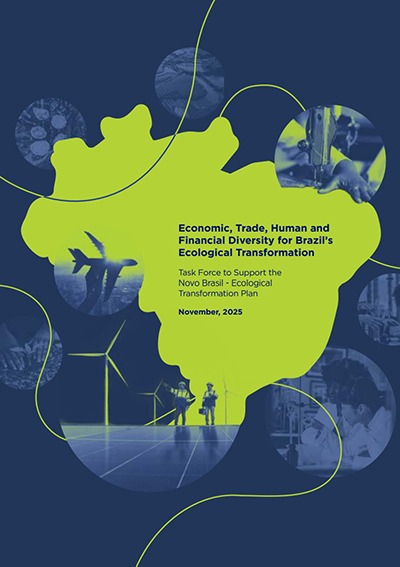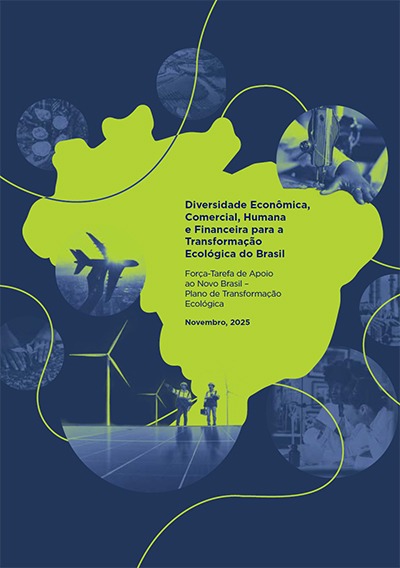Blended finance could be one of the best ways to attract the extra trillion dollars from the private sector to meet the annual US$6 trillion needed to achieve the SDGs. The majority of this money will be needed for sustainable infrastructure projects in emerging markets, which are often seen as too risky for mainstream investors. Using public funds can attract private investment by mitigating these risks, blending public and private capital could be a win-win for both investors and global development. But the blended finance market needs to scale in order to get from billions of dollars of aid or public funds from the development banks to trillions of dollars of private investment. The Blended Finance Taskforce calls for leadership to develop the blended finance action plan in order to get to scale.
“Action is needed end-to-end across the whole investment system to scale up the use of blended finance if we are serious about closing the funding gap for the SDGs,” said Lord Mark Malloch-Brown, chair of the Business & Sustainable Development Commission.
Scaling up blended finance vehicles
The Blended Finance Taskforce was established by the Business & Sustainable Development Commission in 2017 to address the system challenges which prevent the market from scaling. Taking a “private sector” lens, the Taskforce has released a consultation paper, Better Finance, Better World, to develop actionable recommendations on this agenda. The release of the paper coincides with the World Economic Forum in Davos where it takes centre stage at a number of key events throughout the week.
Momentum is building around the $50+ billion blended finance market. It could double again in the next 3-4 years as providers of concessional and other forms of development capital earmark more money to be used for blending, and as private investors look to take advantage of this risk cushion. But we need to see a dramatic scale-up in the size of blended finance vehicles, moving from many fragmented $100 million funds, to a growing number of vehicles, each with $1-10 billion of capital. In parallel, the market will still require innovative, more bespoke funds to ensure small-scale and higher-risk, frontier projects are served.
Setting targets to engage the private sector
The development banks will be critical to scaling the blended finance market and can do so by setting ambitious targets to mobilise external private finance. Setting targets should change how development banks do business and engage with the private sector, lowering transaction costs by leading to greater product standardisation and asset pooling across development banks. Currently, the multilateral development banks (MDBs) have private capital mobilisation ratios of less than 1:1 – for every dollar of development capital, they mobilise less than US$1 of private investment across their portfolios.
This ratio needs to increase significantly, and would need to more than double over the next decade to get anywhere close to the trillion-dollar financing target. Achieving higher mobilisation ratios will require the MDBs to sharply increase their share of private sector activities which currently accounts for only around 30% of MDB activities. They also need to ramp up the mobilisation ratios of the private sector arms from less than 2:1 to closer to 4:1 (or more). The bilateral development finance institutions also need to commit to higher mobilisation ratios. According to Jeremy Oppenheim, co-chair of the Blended Finance Taskforce, “Having the development banks setting ambitious targets for private capital mobilisation will send a ‘shock-wave’ through the system and incentivise major financial players to build up their teams on this agenda.”
Developing the action plan
The Taskforce would welcome your input on Better Finance, Better World. The consultation phase will run until mid-March 2018 with the final report to be published at the World Bank / IMF Spring Meetings in late April 2018. If you would like to be a part of developing the action plan, or simply want to know more, please contact [email protected] and [email protected].
Working Papers
The Taskforce commissioned a series of working papers on blended finance to contribute to this action plan. “Who is the private sector? Key considerations for mobilising institutional capital through blended finance” was prepared by Convergence (and Tideline in an advising role) and catalogues investment motivations, requirements, and constraints of institutional investors in taking advantage of blended finance mechanisms. “Blended Finance in Clean Energy” was prepared by the Climate Policy Initiative and analyses opportunities where blended finance can mobilise large scale private capital for clean energy. “Financing Sustainable Land Use” was prepared by KOIS Invest and explores how to unlock business opportunities in sustainable land use with blended finance.
About the Blended Finance Taskforce
Co-chaired by Lord Mark Malloch-Brown and Jeremy Oppenheim, the Taskforce brings together leaders from finance, business, development and policy. The Taskforce benefits from the support of its Steering Committee (see list), as well as senior advisor, John E. Morton, SYSTEMIQ for Secretariat support and numerous other organisations including CPI, KOIS Invest, Convergence and Tideline. The Taskforce also appreciates the coordination and thought leadership from a number of blended finance initiatives including those of the leading development banks, the OECD, the WEF, SDIP and the NCE.
Additional downloads:




